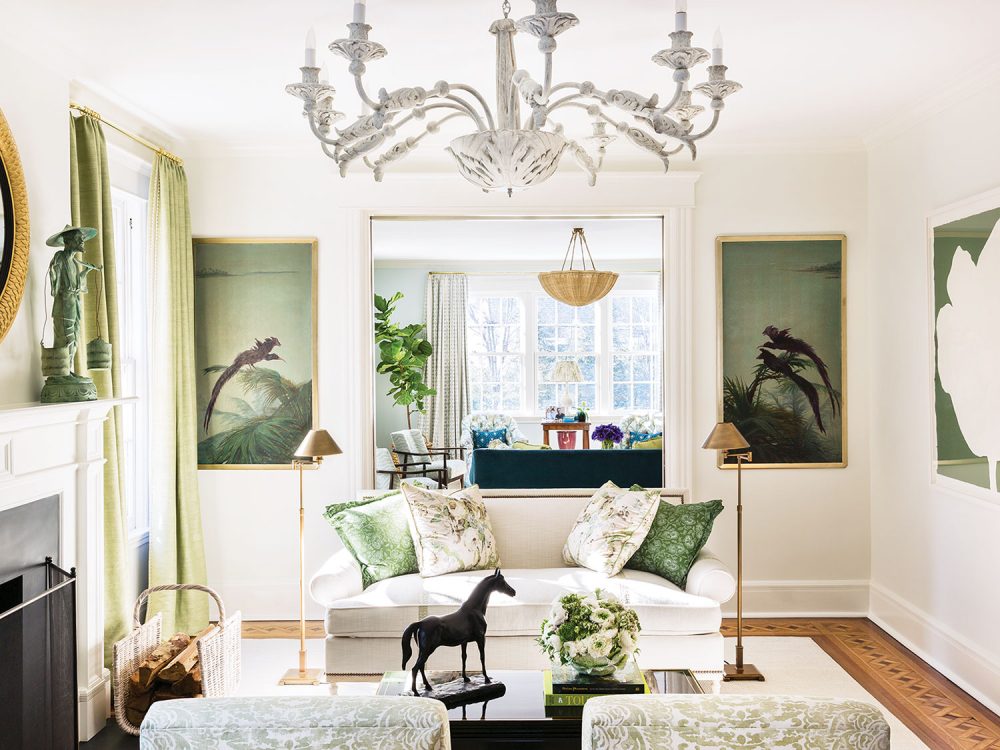

When Heather Mahajan and her husband, Saahil approached CeCe Barfield Thompson about decorating their home in Larchmont, New York, they had a clear vision, a blank slate, and a growing young family. “They had just moved into the house and were willing to start from scratch,” says Barfield Thompson. The Mahajans’ new home, a six-bedroom 1908 Colonial just two blocks from the ocean, held great promise, but the family’s contemporary furniture from their former residence did not translate well. “They wanted an updated take on the Parish-Hadley style, rooted in tradition with bold touches,” says the designer. “For Heather, who had really done her homework, she felt like this was the way to give the house a new life.”
With an education in historic preservation and a background as senior designer for the legendary Bunny Williams (a Parish-Hadley alum herself ), Barfield Thompson was the perfect choice for the project. “I think studying historic preservation gave me a reverence for the past that is reflected in my work,” says the designer, who started her own firm in 2015 after the birth of her first child. “It made me appreciate the quirks that come with historical spaces. I’ve found I actually enjoy working within those constraints. I love the marriage of the old and the new, the feeling that rooms have a past and a future.”
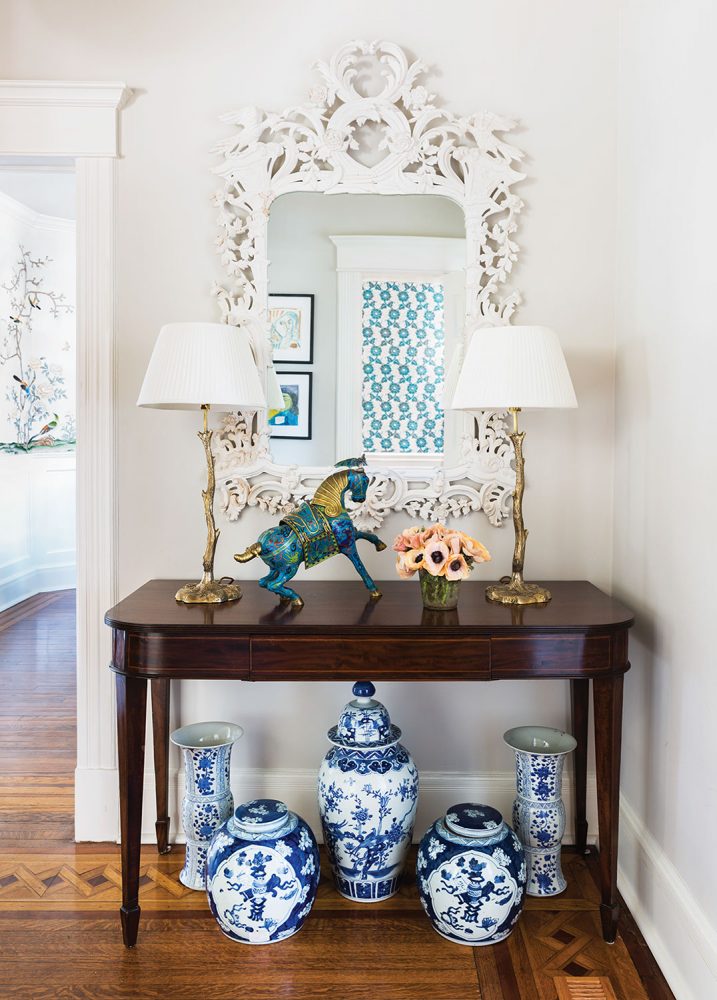
The Larchmont home has historic character— beautiful bones, gorgeous natural light, and original parquet floors—but the Mahajans wanted to make the space work as a modern home for their four young children and one large standard poodle.
“We were very sensitive to the fact that this is a family house,” says Barfield Thompson. “Nothing is too formal; no relationship is too serious. Heather and Saahil love to entertain formally in the dining room, but they’re also hosting kids soccer parties in the kitchen.”
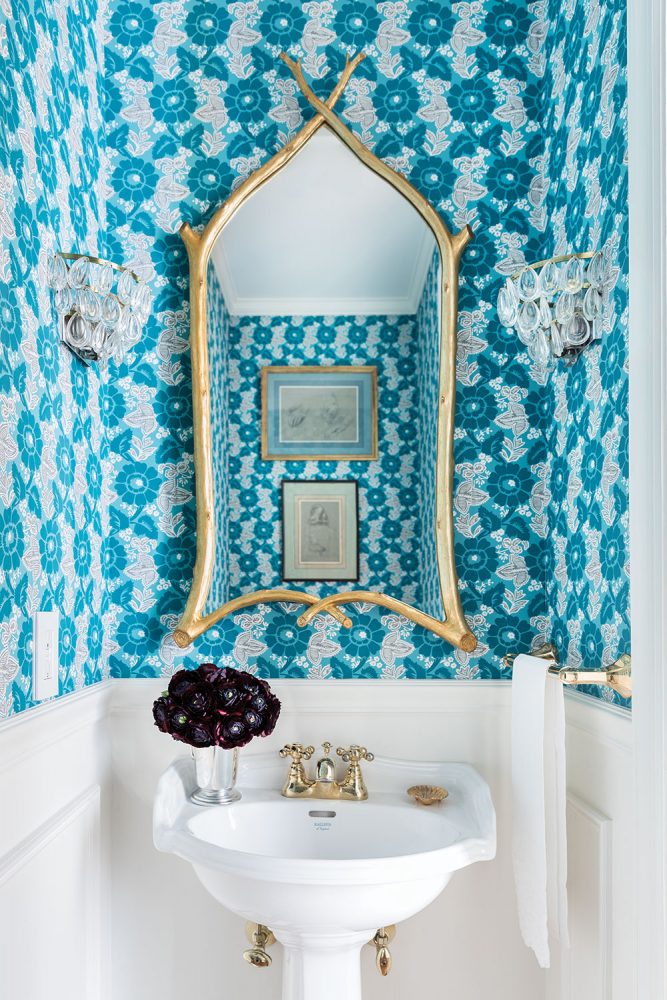

Whenever she could, Barfield Thompson used indoor/outdoor fabrics for their performance. Similarly, rugs and carpets were chosen with durability in mind. But the designer makes a strong case that some of the finest fabric is also the most practical, as evidenced by the use of chintz throughout. “Chintz is so Old World and glamorous, but it’s truly the most practical fabric,” says Barfield Thompson, who admits to having a serious soft spot for the floral pattern. “It hides stains beautifully, and it only looks better with age.”
Like her mentor Bunny Williams, Barfield Thompson has a gift for sourcing objects, art, and lighting that give spaces an authentic, layered, lived-in look—“a collected feel,” as she likes to call it. Some things in the Mahajans’ home are from high-end vendors—art from auction houses like Doyle and Christie’s, antiques from dealers like John Rosselli and 1stdibs. But Barfield Thompson—like any good designer worth her salt—also knows a diamond in the rough when she sees it, as evidenced by the handsome console in the foyer, picked up at the Housing Works thrift store and refinished.
All decorating projects have a jumping-off point—and for Heather and Saahil it was a tear sheet of chinoiserie paper from an old Architectural Digest. Barfield Thompson found a gorgeous paper that captured the same feeling of walking into a forest of flowers, and, she says, “everything in the house filled out from that place.” The colors in the paper— violet, teal, celery, and cream—defined the palette used throughout the downstairs. To add to the lush, botanical feel, Heather brings in ferns for the sideboard and a pair of Italian plant stands.
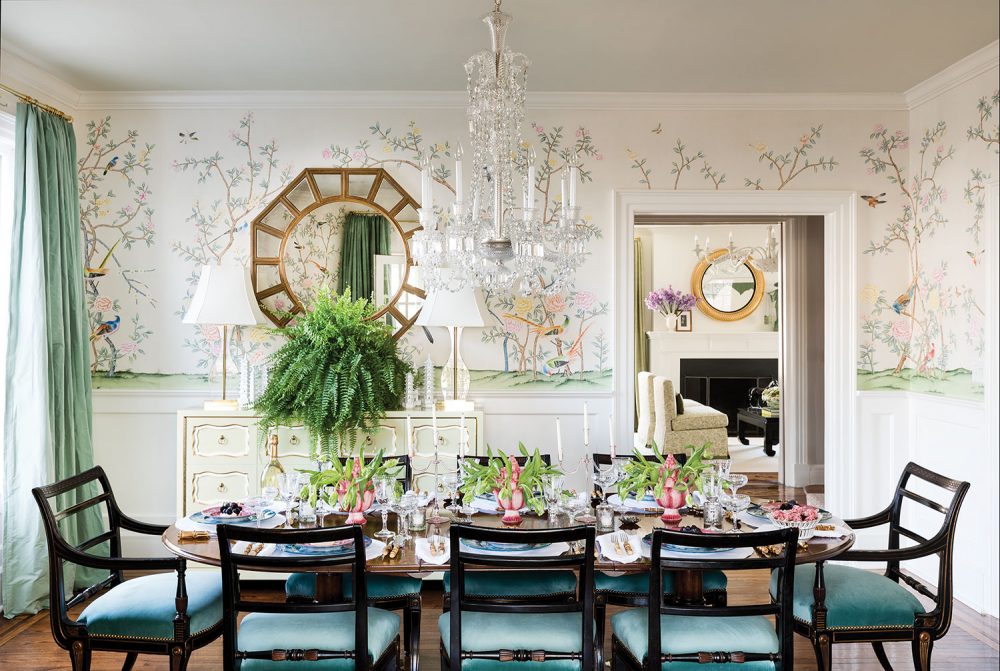
While the formal living and dining rooms strike a serene note, the powder room is a small space with the volume amped up. “I think that powder rooms are an opportunity to create a jewel box moment,” says Barfield Thompson, who did just that with graphic Adelphi paper and eclectic pairings. “I love how the sconces hang like earrings on either side of the mirror.”
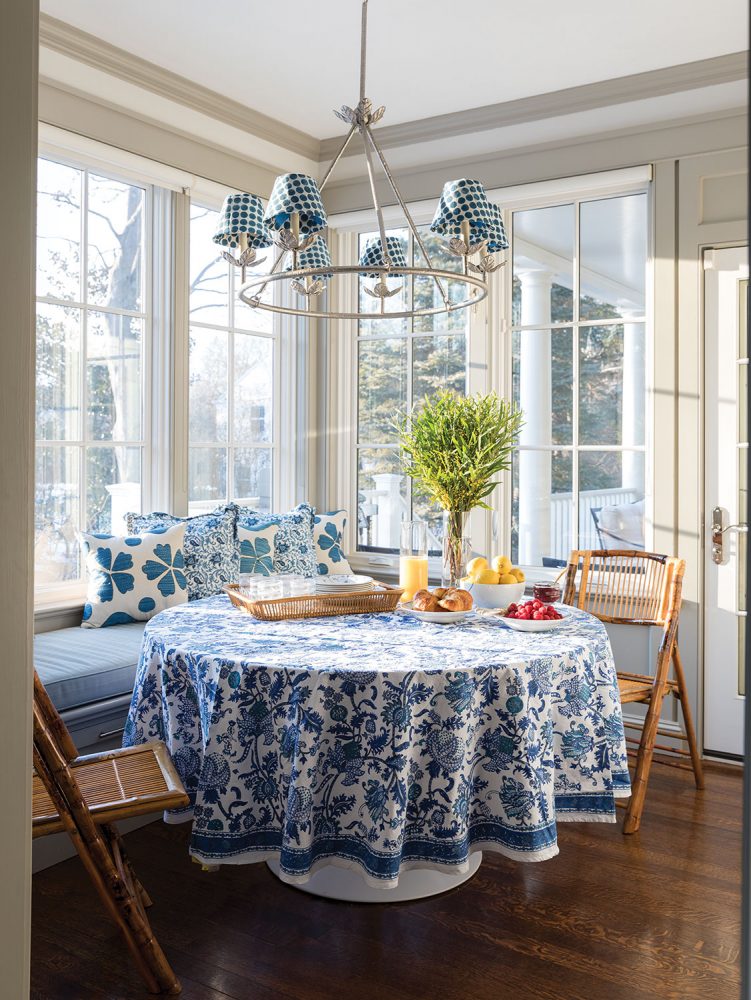
“In the breakfast room, a lot of light streams in,” says the designer. “To maximize that bright, happy feel, we went with a blue-and-white palette and layered in a lot of Indian textiles.” In the summertime, doors open to the wraparound porch, making the breakfast table an ideal spot for an evening buffet or bar.
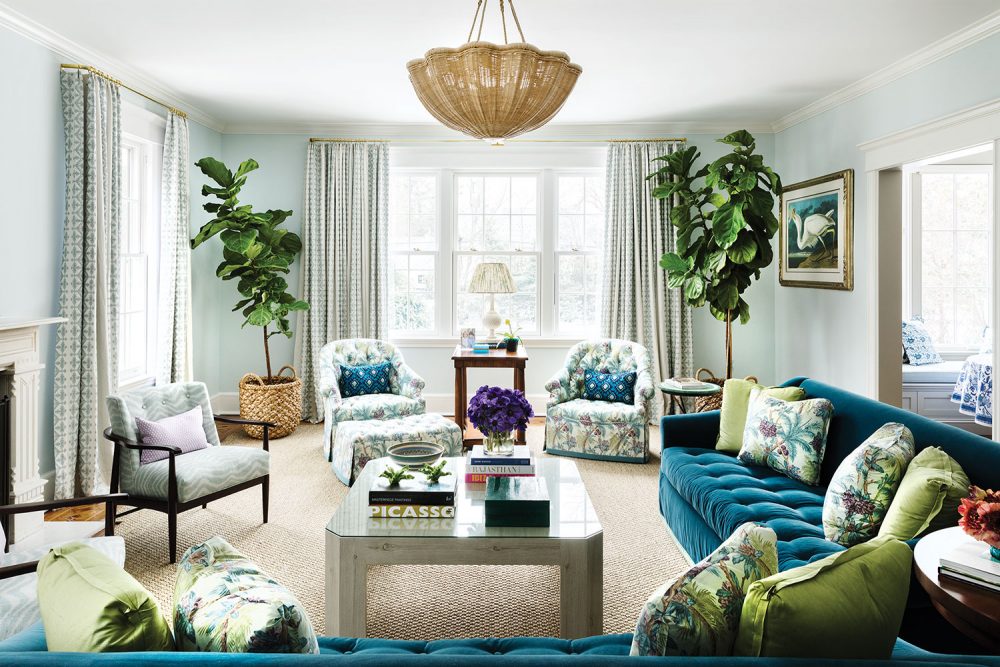
For the den, the Mahajans wanted to create a haven. “This is where the family really lives,” Barfield Thompson says. “At night, after putting the kids to bed, this is where Heather and Saahil relax, decompress, watch a movie.” Inviting teal sofas work in harmony with the beguiling floral chintz on chairs and pillows. “We painted the walls the color of the sky,” says the designer, “so when you look out the windows, you feel connected to nature.”
Connecting people to the natural world, creating spaces that uplift and welcome, these are the things that give Barfield Thompson the greatest satisfaction as a designer. “It’s such a gift, what I do, to be able to set the tone for the way people live,” she says. “It’s a real responsibility and a pleasure. You’re helping your clients figure out how to live their best life.”
By Kirk Reed Forrester | Photography by Lesley Unruh
